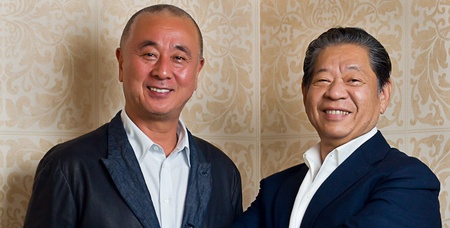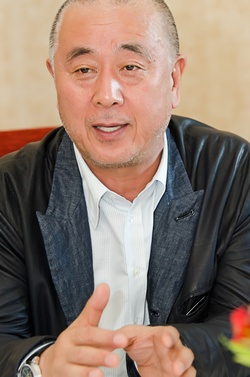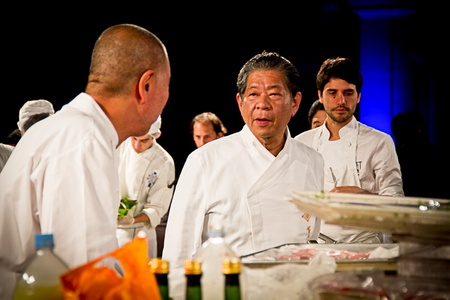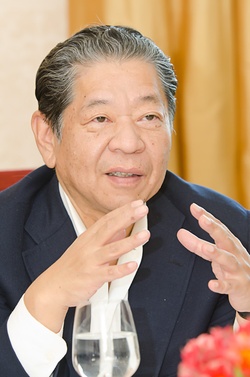It is said that there are no secrets in the kitchen. However, for a few years there has been a word that chefs, gourmets, critics and connoisseurs of good eating have been repeating. A Japanese term that is jumping from palate to palate and has arrived in Peru. Its name is umami and means “tasty flavor” or “savory.” It is found in various foods and meals in the country, but it is only recently on the lips of Peruvian diners.
In Japan, on the other hand, it is the basis of their food, an ancestral knowledge that is transmitted from generation to generation and that Dr. Kikunae Ikeda, from the Imperial University of Tokyo, managed to identify in 1913, by isolating the glutamate that is present in the dashi broth, made from konbu seaweed, which gives it its distinctive flavor. Thanks to these studies, it was possible to determine which foods have this gustatory property that is perceived in the center of the tongue.
They also call umami the fifth flavor, a mystery that hides between sour, salty, sweet and bitter, which Japanese cooks have managed to master and which is in traditional soy sauce and dashi , but also in cheese ( especially in parmesan), cured meats (especially pork, such as bacon), tomatoes and their derivatives (ketchup and pasta); asparagus, carrots and other vegetables, as well as various fish.
Nobu Matsuhisa and Yoshihiro Murata, two of the most renowned Japanese chefs today, arrived in Lima at the end of November 2011 to cook at the Umami Charity Dinner, a gastronomic event to benefit the United Nations World Food Programme, which It was held for the first time in Peru, with the organization of the Umami Information Center and the Ajinomoto Foundation.
The gastronomic objective was to introduce Peruvian diners to the umami flavor and the variety of combinations of ingredients that can be used to taste it. The social objective was to raise funds for a farming community, so that agriculture, one of the pillars of gastronomy anywhere in the world, benefits from this event.
They were not the only ones in charge of the kitchen at this dinner for 250 people. Pedro Miguel Schiaffino, Virgilio Martínez, Toshiro Konishi, Mitsuharu Tsumura, Astrid Gutsche and Renato Peralta also showed their skill in highlighting the umami in each dish served.
The secret of umami is within the reach of any language but, to know its secrets, you need to listen to these Japanese masters who find in it a substitute for salt and a healthier, tastier and more pleasurable source of pleasure that Peruvians can continue to discover. and exploring the natural biodiversity of its land and the innovations prepared by its extraordinary chefs.

Masters of umami. Japanese chefs Nobu Matsuhisa and Yoshihiro Murata visited Lima at the end of 2011, where they offered an exciting culinary experience at the Umami Charity Dinner.
Nobu Matsuhisa: “Peruvian gastronomy is very popular”

“Before, no one in the world knew what a ceviche or an anticucho was. Now Peruvian cuisine is very popular,” says Nobu.
Nobuyuki Matsuhisa needs no introduction. Its famous Nobu franchise has offices in the Bahamas, Beijing, Budapest, Dubai, Las Vegas, London, Milan, Moscow, New York, Tokyo and several other cities.
In addition to the Nobu restaurants, his last name names his other chain of gourmet food restaurants, with a philosophy that surrounds the feelings and personality of the creator, making each of his dishes unique.
Its secret is in umami and in that risky combination of flavors that delighted actor Robert de Niro, his partner in the franchise. Even when he lived in Lima, Nobu learned to improvise ingredients to prepare Japanese food. But it was the Peruvian chili peppers that opened his mind. Part of this reinvention of dishes and inputs helped him become the celebrity of modern gastronomy that he is now.
Now that he is back in what he considers his second homeland, Nobu is accompanied by Yoshihiro Murata, a talent in identifying umami . “Fifteen years ago I participated in a Umami Information Center seminar. In Japan we knew that food tasted like dashi , but after this seminar I was able to better understand what umami was and I have been able to make better combinations,” says Nobu.
Peruvian flavors
“Peru has changed a lot, the food used to be classic and now it is more modern. Before, ceviche was cooked in lemon for four or five hours. Now it is done at the moment. The tiraditos were not known. I live in Los Angeles and restaurants like Mochica or La Mar in New York are very famous,” says Nobu, who when he lived in Lima ate everything: stuffed potatoes, rice with chicken, shrimp and chicken.
Now, with the new generation of chefs that have appeared, says Nobu, Peruvian food has become more sophisticated, which does a lot of good for it to spread around the world. “There is a lot of Nikkei food, like that of Humberto Sato and Toshiro Konishi, that has been renewed and continues to be modernized by young talents like Mitsuharu Tsumura,” says the chef.
For Nobu, whose dishes have been tasted by the most famous Hollywood stars, such as Madonna, Kate Winslet, Richard Gere and Tom Cruise, Nikkei gastronomy can reach global stardom, but it is still very similar to the food prepared at home. . To make that leap and reach a professional level it has to modernize and become better known.
“Before, no one in the world knew what a ceviche or an anticucho was. Now Peruvian gastronomy is very popular. In recent years the restaurants have modernized a lot and people like it. In the Andes and the jungle there are many new products that chefs like Pedro Miguel Schiaffino are discovering and making them fashionable. The same awaits Nikkei food.”
The Japanese chef, who once toured Lima as if it were his home and who this year returned to marvel at the fruits of the Surquillo market and the wonders of the Amazon River, cannot avoid reflecting on the art that surrounds his life and the meaning what it has for him. “We Peruvians and Japanese have many passions. Passion means happiness, love, pleasure. Gastronomy and umami are our source of pleasure.”
Yoshihiro Murata: “ Umami is present in breast milk”
Yoshihiro Murata is a master of umami and Japanese cuisine. Heir to the Kikunoi restaurant in Kyoto, he has known how to renew the style of Japanese cuisine by highlighting in his dishes the umami flavor that he knew from his ancestors. This concept, he says, is the main basis of Japanese food.
“There are three elements that make men more eager to eat: fat, sweet and umami . Food in the world has always focused on the fat element, but traditional Japanese food does not use oil, so it has focused on umami ,” says Yoshihiro.
“There is a trend in the world to reduce kilocalorie consumption. In a cubic centimeter of fat you have nine kilocalories, while umami has no calories, which is why Japanese food is healthier," says the teacher whose cuisine, traditional and modern at the same time, has aroused the admiration of his countrymen and chefs of the stature of Ferrán Adrià.
Murata is also president of the Japanese Culinary Academy and author of well-known cookbooks such as Japonese Home Cooking and Kikunoi, winner of “Best Chef Book” at the Gourmand World Cookbook Awards, where he shares the story of his famous restaurant that features local in Kyoto and Tokyo.
In them, umami is a fundamental part of the gastronomic proposal that “is savored with the heart”, but that is studied almost with scientific rigor. “The basis of traditional Japanese food is umami and it continues to be because it is an element that is present even in breast milk. For us it is fascinating to find foods in other countries that have an umami flavor that we don't know about to present them in Japan and incorporate them into our cuisine,” says Murata.
* This article is published thanks to the agreement between the Peruvian Japanese Association (APJ) and the Discover Nikkei Project. Article originally published in Kaikan magazine No. 62, December 2011 and adapted for Discover Nikkei.
© 2011 Asociación Peruano Japonesa; © 2011 Fotos: Asociación Peruano Japonesa / Álvaro Uematsu, Érika Kitsuta











